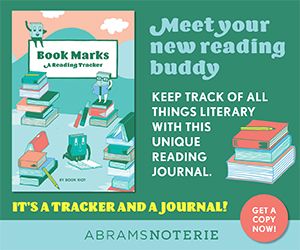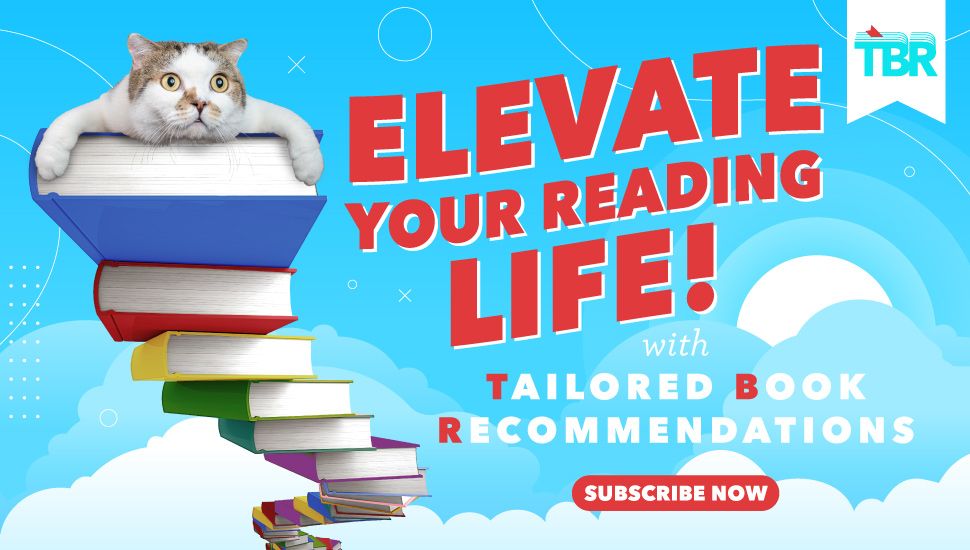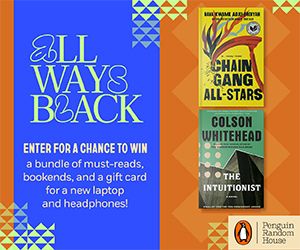
All Audiobook Listeners Have Their Quirks—Here’s Mine
This post on audiobook quirks is sponsored by Book Marks: A Reading Tracker.
 Meet your new reading buddy: an all-in-one spot to record everything and anything book related. Inspired by bullet journaling, Book Marks offers ideas for setting up a multitude of book tracking pages with a mix of fill-in prompts, charts, lists, and plenty of dot-grid pages to customize. To help expand your literary horizons, the journal also includes a section of recommended reading lists compiled by Book Riot. Use Book Marks to jot down what you’re currently reading, what’s on your nightstand, your favorite quotes, new vocabulary words, memorable characters, your reviews of recent reads, and more. A clever bonus: the back flap has a punch-out bookmark!
Meet your new reading buddy: an all-in-one spot to record everything and anything book related. Inspired by bullet journaling, Book Marks offers ideas for setting up a multitude of book tracking pages with a mix of fill-in prompts, charts, lists, and plenty of dot-grid pages to customize. To help expand your literary horizons, the journal also includes a section of recommended reading lists compiled by Book Riot. Use Book Marks to jot down what you’re currently reading, what’s on your nightstand, your favorite quotes, new vocabulary words, memorable characters, your reviews of recent reads, and more. A clever bonus: the back flap has a punch-out bookmark!
All audiobook listeners have their quirks. Some of my friends only listen to nonfiction on audio, while others swear plot-driven fiction is the way to go. Some people listen at double speed, and others refuse to listen to any format besides CDs. My quirk—part of my overall charm, I’m sure—is that I always keep a print copy of the book on hand when I’m listening to an audiobook.

Having the print edition on hand helps me follow along as I listen to longer audiobooks. Before I started keeping a print edition close by as I listened to an audiobook, I used to struggle with long, complex texts, whether those titles were in-depth biographies, complicated fictional narratives, or any other type of book that requires an intense amount of attention over a long period of time.
Several years ago, I spent the entire summer listening to Jane Smiley’s One Hundred Years trilogy, which spans many generations of a single family. Frustrated that I kept forgetting characters’ names and how they were related to one another, I ran upstairs and grabbed the print edition to check the family tree in the front matter. I realized that when I read a book in print, I often flip back to check facts, refamiliarize myself with characters’ names, or pour over maps in the book’s front matter. Now, keeping the print copy of the book close by helps me get more out of the text I’m listening to and stay engaged with the story.
I love to annotate almost as much as I love audiobooks. Ever since I was a kid, I’ve enjoyed to annotating books as I read. There’s something intimate and meaningful about underlining and writing your thoughts about a book at any given point in your life. Every year when I reread A Room of One’s Own by Virginia Woolf, I annotate the same copy in a different colored pen as I listen along to the audio. When I’m reading a book for a book club or an author interview, I often pause the audiobook to write down some thoughts in the book. For me as a reader, interacting with the text helps me gather my thoughts and remember what I’ve read.
There’s nothing like reading the text and listening to the audio at the same time. Especially when it comes to poetry or graphic novels, it’s hard to get the full understanding of certain texts without a visual element. While some of these kinds of audiobooks come with digital files, I struggle to get the most out of a book when reading on a screen. Instead, I look at the print text as I listen to the audiobook so I can see how poets like Tracy K. Smith play with form or how graphic novelists like Mira Jacob use of illustration enhances their stories. For me, reading this way with a combined format is the best of both worlds.
There’s just nothing like holding a print book in my hands. Back before audiobooks took off as a much-beloved part of the publishing industry, I used to walk around my local library and run my hands along the spines of all the books I wanted to read but couldn’t. Chronic daily headaches and migraines have limited my print reading since I was a kid, and even though my library was an early adopter of Overdrive, to me, there was something irreplaceable about holding a print book in your hands, running your fingertips down the smooth cover, and feeling its textured pages. No matter how much I love audio, this experience is one I can’t ever give up. And I shouldn’t have to. So despite loving audiobooks with all of my being, I still have a library full of double-stacked shelves with piles of books in front of them.
So yes, keeping print copies of the audiobooks I listen to can get expensive (thank heavens for libraries!), limit my bookshelf space, and get me strange looks from other audiobook lovers, but this is my quirk. It’s what works best for me and gives me joy; I wouldn’t have it any other way.





